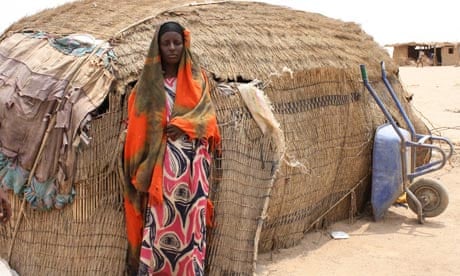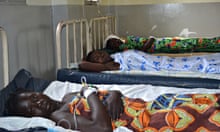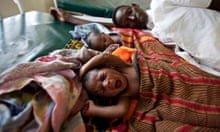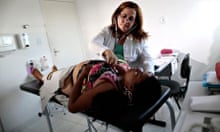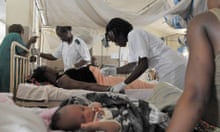In Ethiopia, a lack of awareness of the importance of skilled hospital deliveries, cultural beliefs and transport challenges in rural areas are causing a high number of deaths during childbirth, say officials. Only 10% of deliveries take place within health facilities, according to the Ethiopia's latest demographic health survey results. Nevertheless, the figure is a significant improvement on 6% in the previous survey, in 2005.
The health minister, Kesetebirhan Admasu, said: "About 60% of mothers who did not attend health facilities while giving birth do not see the benefit of delivering in health facilities, while the remaining 30% abstain from going there by giving culture and beliefs as their reason. That [the] majority of women did not appreciate the value of institutional delivery calls for a concerted effort to educate women and families about the importance of skilled birth attendance and postnatal care."
Many women prefer delivering at home in the company of known and trusted relatives and friends, where customs and traditions can be observed, according to a 2011 study published in the Ethiopian Journal of Health. "Even though communities are aware of the dangers around childbirth, contingencies for potential complications are rarely discussed or made, such that most families hope or pray that things will turn out well. When things go wrong, precious time is lost in finding resources and manpower to assist in the transfer to a health facility," the study said.
About 80% of all maternal deaths in Ethiopia are due to haemorrhage, infection, unsafe abortion, hypertensive disorders and obstructed labour, along with HIV and Aids and malaria, said a senior health ministry maternal health expert, Frewoine Gebrehiwot.
The maternal mortality ratio in Ethiopia is 676 for every 100,000 births. This compares with an average of 290 per 100,000 births in developing countries, and 14 per 100,000 in developed countries, according to the UN World Health Organisation.
Besides death, at least 500,000 Ethiopian women and girls who miss out on skilled healthcare during delivery end up suffering other complications, including obstetric fistula.
The health ministry is working on behaviour change through health extension programmes and is providing each of Ethiopia's 550 districts with an ambulance to facilitate transport for pregnant mothers who want to deliver in health facilities free of charge.
But some of the hospitals are lacking in equipment, skills or policy guidance to enable them to provide basic emergency obstetric and newborn care, according to a study by the health ministry and its partners, who, using 2008 data, found that only 51% of hospitals qualified as offering comprehensive care.
"Most of the health facilities which are far from Addis Ababa are either not fully staffed with skilled service providers or fully equipped with the necessary supplies and equipment that can provide quality services related to complications during pregnancy and childbirth," said the UN Population Fund (UNFPA).
"Limited human resources, especially midwives, hamper efforts to provide adequate services, especially in rural areas. Gaps in training and remuneration have led to attrition and turnover among public sector healthcare professionals."
According to the UNFPA, public facilities routinely suffer stockouts and obstetric care equipment shortages due to budget deficits and poor management. Free services provided at health centres are to blame for the shortages, according to the health ministry, which hopes a new health insurance scheme – to be piloted in 13 rural districts – will help to provide more funding.
The ministry is seeking to increase the number of women delivering in hospitals by tapping into those seeking antenatal care and providing sustained family planning services at the district level. "We are particularly trying to decrease mothers' deaths by retaining the significant numbers of pregnant women who come to receive antenatal care from hospitals but [go] missing [during] delivery," said Frewoine.
At least 34% of pregnant women aged 15-49 receive antenatal care from a skilled health provider such as a doctor, nurse or midwife, but only 10% give birth there.
"The same can be said about the high unmet need for family planning in couples and also among young people," said Frewoine, adding that plans are under way to assign two midwives to every health centre in every district in the next three years. So far, around 1,630 nurses have been trained as midwives in a one-year accelerated training programme. Their number is expected to reach more than 4,600 by 2015.
